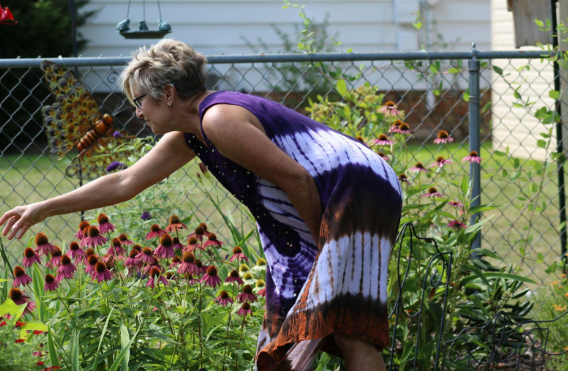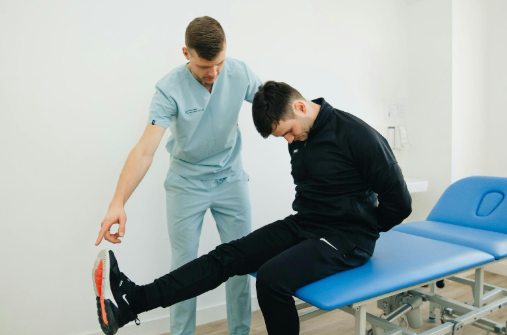Spring into Pain Relief: How Warmer Weather Affects Chronic Pain
Spring into Pain Relief: How Warmer Weather Affects Chronic Pain

As the chill of winter fades and the warmth of spring sets in, many people with chronic pain notice a shift in how their bodies feel. Some experience relief as their muscles loosen up, while others find that the changing temperatures and shifting weather patterns bring new challenges.
If you have chronic pain, it’s good to know how warmer weather impacts it so you can take advantage of the season while managing any discomfort that may arise. So let’s jump in!
The Science Behind Weather and Chronic Pain
Whenever the seasons change, the environment around us does too. Temperature, humidity, and barometric pressure all play a part in how our bodies respond to pain. For many chronic pain sufferers, especially those with conditions like arthritis, fibromyalgia, or nerve pain, these weather shifts can lead to noticeable differences in symptoms.
Temperature and Muscle Relaxation
One of the biggest advantages of warmer weather is its ability to help relax stiff muscles and joints. Cold temperatures can cause muscles to tense up, leading to increased pain and restricted movement. As spring arrives and temperatures rise, the body naturally becomes more flexible, allowing for better mobility and reduced stiffness. This is particularly beneficial for people with arthritis or chronic back pain, as warmth promotes better circulation and eases inflammation.
The Role of Barometric Pressure
Barometric pressure, or the weight of the air around us, fluctuates with seasonal changes. Many chronic pain sufferers report increased discomfort when barometric pressure drops, which is common before storms or during sudden weather shifts. In spring, pressure levels tend to be more stable than in the winter, which can lead to a decrease in pain for some individuals. However, for others, sudden temperature spikes or increased humidity may still trigger flare-ups, making it important to track how weather patterns affect your body.
More Activity, More Relief with Springtime Movement
With longer days and warmer weather, many people naturally become more active in the spring. Increased movement can be a double-edged sword for those with chronic pain—on the one hand, staying active helps improve flexibility, reduce stiffness, and strengthen muscles, but on the other, overexertion can lead to flare-ups.
Spring offers the perfect opportunity to engage in gentle, low-impact activities that promote pain relief without straining the body. Walking, swimming, and yoga are excellent options that allow you to enjoy the benefits of movement without excessive stress on your joints and muscles. Being outdoors also provides an added boost of vitamin D, which is essential for bone and muscle health.
While it’s tempting to dive into outdoor activities after months of being indoors, pacing yourself is important. If you have chronic pain, it’s important to ease into new routines gradually. Start with short walks or light stretching and build up your endurance over time. Listen to your body—if an activity causes a significant increase in pain, it’s best to modify it or take a break to prevent further discomfort.
Managing Springtime Pain Triggers
Despite the many benefits of warmer weather, spring can also introduce new pain triggers. Pollen, allergens, and fluctuating humidity levels can all contribute to inflammation and discomfort, making it necessary to have a strategy for managing these seasonal challenges.
Allergies and Inflammation
Spring allergies don’t just cause sneezing and congestion. They can also trigger inflammatory responses in the body that worsen pain. For individuals with conditions like fibromyalgia or rheumatoid arthritis, increased inflammation can lead to heightened sensitivity and joint discomfort. Managing allergies with antihistamines, staying indoors during peak pollen times, and using air purifiers can help minimize the impact on chronic pain.
Hydration and Humidity Control
Warmer weather often brings increased humidity, which can affect pain levels. Some people experience swelling in their joints due to excess moisture in the air, while others may feel increased stiffness in dry, hot conditions.
Staying hydrated is one of the best ways to counteract these effects, as proper hydration helps maintain joint lubrication and overall body function. Using a humidifier or dehumidifier indoors can also help regulate moisture levels to keep discomfort at bay.
Embracing the Benefits of Spring
While chronic pain can make it difficult to fully enjoy seasonal changes, taking proactive steps to manage symptoms can make a significant difference. Warmer weather provides an opportunity to ease stiffness, increase movement, and improve overall well-being. By staying mindful of how your body responds to temperature changes, adjusting activity levels accordingly, and addressing potential triggers like allergies and humidity, you can make the most of spring while keeping pain under control.
Are you suffering from chronic pain? Come see our team at
Arkansas Spine and Pain!
Contact us today and let’s work together to make sure you get the most out of the spring season this year.



